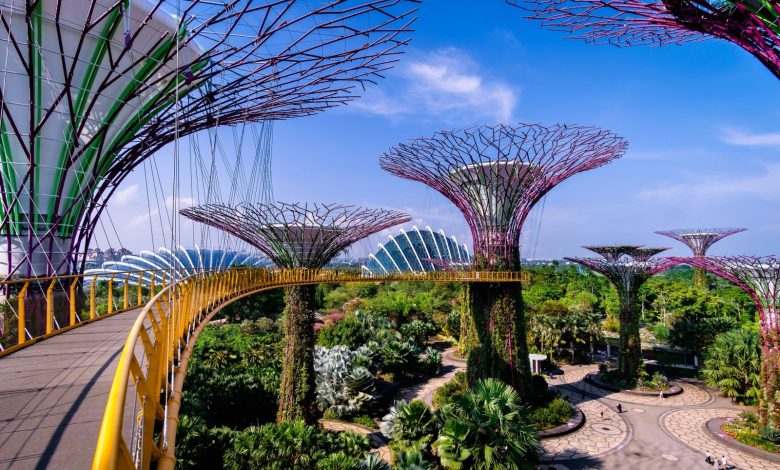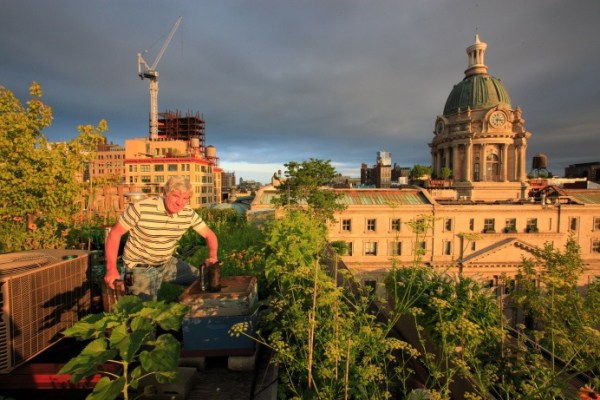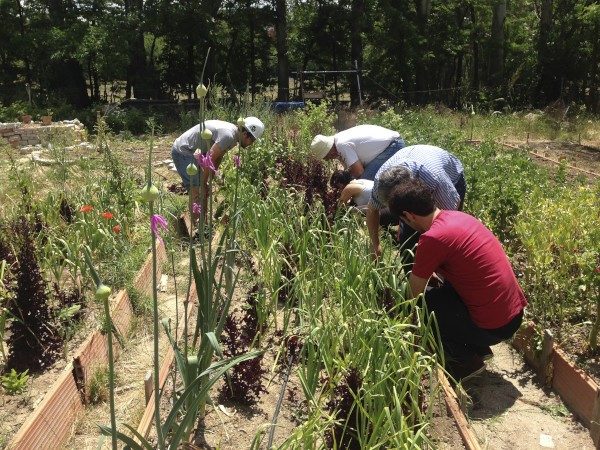Urban gardens: types of gardens in cities and their benefits

In this post we will once again honor the name of our page and we will talk about gardens: the types of gardens in cities, which are not few!
There are many different types of urban gardens, so we will dedicate a couple of articles to talk about the benefits of urban gardens that we can find in our cities.

As we saw in the article on the benefits of urban gardens, city gardens have advantages in so many areas and for so many groups that it is difficult for other urban spaces to match them. As we have already seen, in addition to the improvement in health derived from an organic, healthier and more natural diet, orchards provide environmental, social, educational, economic benefits…
For this reason, as there are so many uses, applications and benefits of gardens in cities, there are also many types of gardens, and each of them is focused on one or more specific objectives and uses, we will see it below… Continue Reading!
In this and the next article on types of urban gardens I will try to make a good classification of gardens in cities. To do this, I will rely on the visits that Daniel, Álvaro and I, the Agrohuerto.com and Agrohuerto TV team, have made in recent months to some urban gardens in Madrid.
(I also recommend that you read the posts of our visits to urban gardens -in the Category « Orchards around the world « -. They are very entertaining and you will learn very useful practical things for your home gardens).
Well, to what we were going… the types of urban gardens ! First of all, it is important to differentiate between for-profit gardens and home gardens that are cultivated for other purposes.
Types of gardens in cities or urban gardens
1. Private for-profit gardens: leisure gardens and gardens for the sale of organic food
They are private orchards of individuals, companies or autonomous producers of organic food.
The fact that they are for profit does not make them worse than the latter, this is not a bad thing… It simply means that their owners obtain economic benefits from them: either because they rent plots or small gardens to urban horticulturists so that they can cultivate them themselves themselves, or because they grow organic products and sell them (organic producers, consumer groups, etc…).

But these orchards in the cities not only benefit their owners, they also help the rest of society by their mere presence in the cities: a bit of nature in the cities, ecological agriculture instead of intensive and aggressive agriculture with the environment, development of markets and local economy, etc.
Types of private for-profit gardens:
- Leisure gardens. They are owned by a company, organization or individual. These orchards have small independent plots that are rented to different urban gardeners for the cultivation and consumption of organic food in their homes.
- Gardens for the production and sale of organic food. Horticulturists cultivate an urban garden and sell the products to urbanites through consumer groups, associations, internet sales or in the garden itself.
2. Home gardens or non-profit home gardens
For non-profit gardens, the economic benefit derived from food production is secondary (although they can also help the family economy by reducing the cost in the shopping basket).
The existence of these gardens in cities lies, above all, in the benefits of urban gardens: health and well-being for the people who grow them and consume their products, socialization, contact with nature, therapeutic properties, integration…
Home gardens can be cultivated individually (such as a garden in the garden of a house), or also collectively, as is the case with community gardens or school gardens.
Types of non-profit urban gardens:
- Homegardens
- Municipal leisure gardens
- Community or neighborhood urban gardens
- Didactic gardens, such as gardens in schools or in other learning centers
- Therapeutic gardens, such as those in hospitals or nursing homes
- Gardens as an aesthetic tool and/or tourist attraction

Decorative gardens. source: air-garden.com
In the following article « 7 types of urban gardens » I will talk a little about each one of them, their purposes and the aspects that differentiate one from the other, so… if you want to know more about the subject I recommend that you click on the name of the post.
Now it’s your turn, do you know other types of orchards in the cities?
This is just a classification made by me, and I have not seen all the orchards that exist! In fact, I am almost sure that I left some urban garden in the pipeline! So… now it’s your turn!
If you think that in these two posts about types of orchards in cities there is some type missing to mention, if your orchard, the one in your neighborhood, one that you heard about or saw on the internet, on TV… it is the most original and leaves this classification, or simply…if you want to tell all Agrohuerto readers about an urban garden (be it a school, community, neighborhood, hospital, restaurant or rooftop garden…), this is the time and the place!
I invite all of you who pass by here to leave your comments (news, corrections, tips…) and your photos of urban gardens so that we can learn from each other, that is the objective of Agrohuerto! And remember that you can follow us on social media!




![Photo of Pruning rose bushes: [Reasons, Season, Tools and Steps to follow]](https://www.complete-gardening.com/wp-content/uploads/2022/08/pruning-rose-bushes-reasons-season-tools-and-steps-to-follow-390x220.jpg)